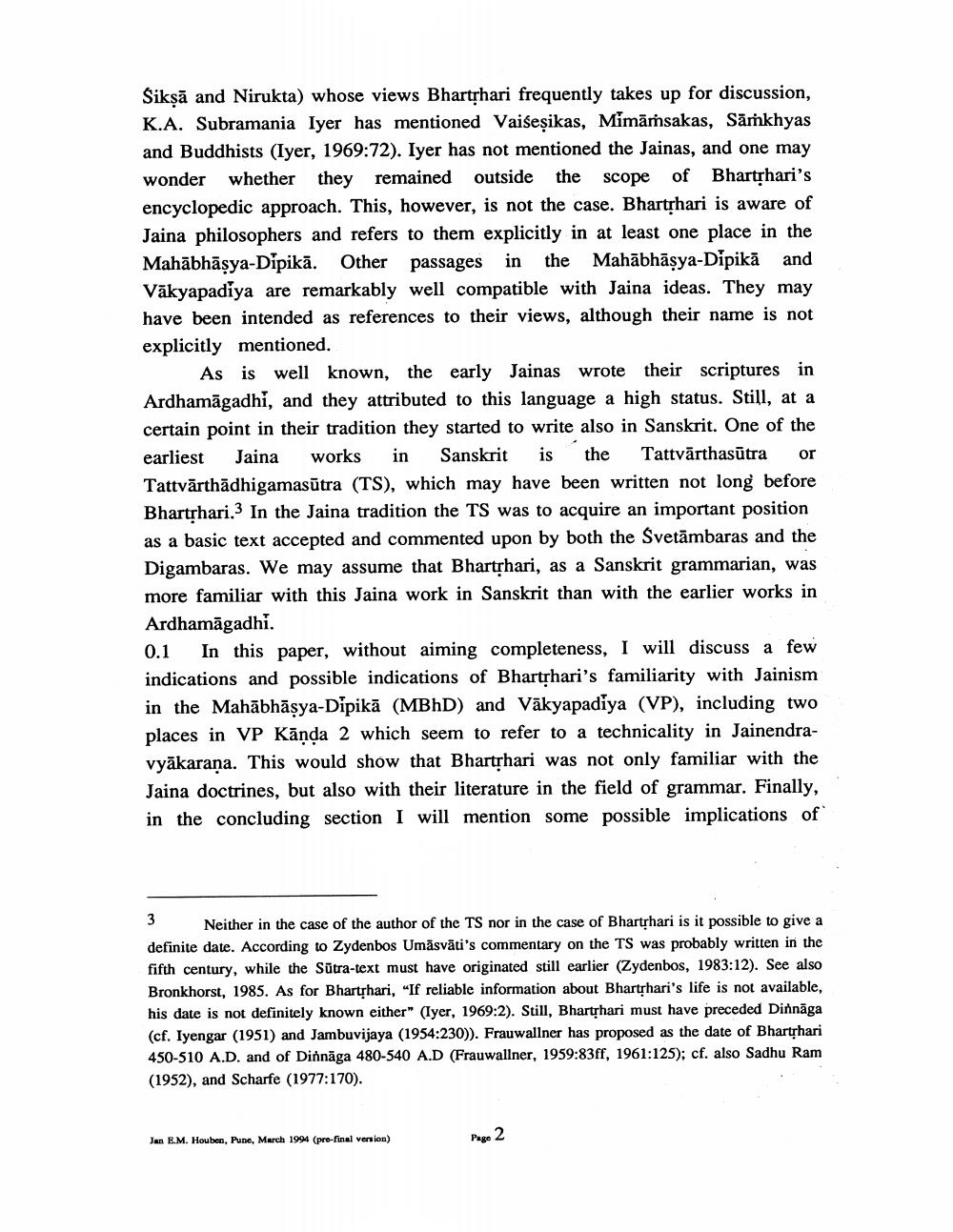Book Title: Bhartrharis Familiarity With Jainism Author(s): Jan E M Houben Publisher: Jan E M Houben View full book textPage 2
________________ Sikṣā and Nirukta) whose views Bhartshari frequently takes up for discussion, K.A. Subramania Iyer has mentioned Vaiseșikas, Mimāṁsakas, Sāṁkhyas and Buddhists (Iyer, 1969:72). Iyer has not mentioned the Jainas, and one may wonder whether they remained outside the scope of BhartŢhari's encyclopedic approach. This, however, is not the case. Bharthari is aware of Jaina philosophers and refers to them explicitly in at least one place in the Mahābhāșya-Dipikā. Other passages in the Mahābhāșya-Dipikā and Vākyapadiya are remarkably well compatible with Jaina ideas. They may have been intended as references to their views, although their name is not explicitly mentioned. As is well known, the early Jainas wrote their scriptures in Ardhamāgadhi, and they attributed to this language a high status. Still, at a certain point in their tradition they started to write also in Sanskrit. One of the earliest Jaina works in Sanskrit is the Tattvārthasūtra or Tattvārthādhigamasūtra (TS), which may have been written not long before Bhartphari.3 In the Jaina tradition the TS was to acquire an important position as a basic text accepted and commented upon by both the Svetāmbaras and the Digambaras. We may assume that Bhartshari, as a Sanskrit grammarian, was more familiar with this Jaina work in Sanskrit than with the earlier works in Ardhamāgadhi. 0.1 In this paper, without aiming completeness, I will discuss a few indications and possible indications of Bharthari's familiarity with Jainism in the Mahābhāsya-Dipikā (MBD) and Vākyapadiya (VP), including two places in VP Kānda 2 which seem to refer to a technicality in Jainendravyākarana. This would show that Bhartshari was not only familiar with the Jaina doctrines, but also with their literature in the field of grammar. Finally, in the concluding section I will mention some possible implications of 3 Neither in the case of the author of the TS nor in the case of Bharthari is it possible to give a definite date. According to Zydenbos Umäsvāti's commentary on the TS was probably written in the fifth century, while the Sūtra-text must have originated still earlier (Zydenbos, 1983:12). See also Bronkhorst. 1985. As for Bhartrhari, "If reliable information about Bharthari's life is not available, his date is not definitely known either" (Iyer, 1969:2). Still, Bharthari must have preceded Dinnāga (cf. Iyengar (1951) and Jambuvijaya (1954:230)). Frauwallner has proposed as the date of Bharthari 450-510 A.D. and of Dinnāga 480-540 A.D (Frauwallner, 1959:83ff, 1961:125); cf. also Sadhu Ram (1952), and Scharfe (1977:170). Jan E.M. Houben, Pune, March 1994 (pre-final version) Page 2Page Navigation
1 2 3 4 5 6 7 8 9 10 11 12 13 14 15 16 17 18 19 20 21 22
